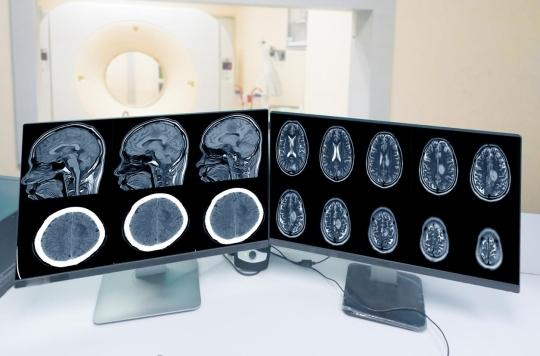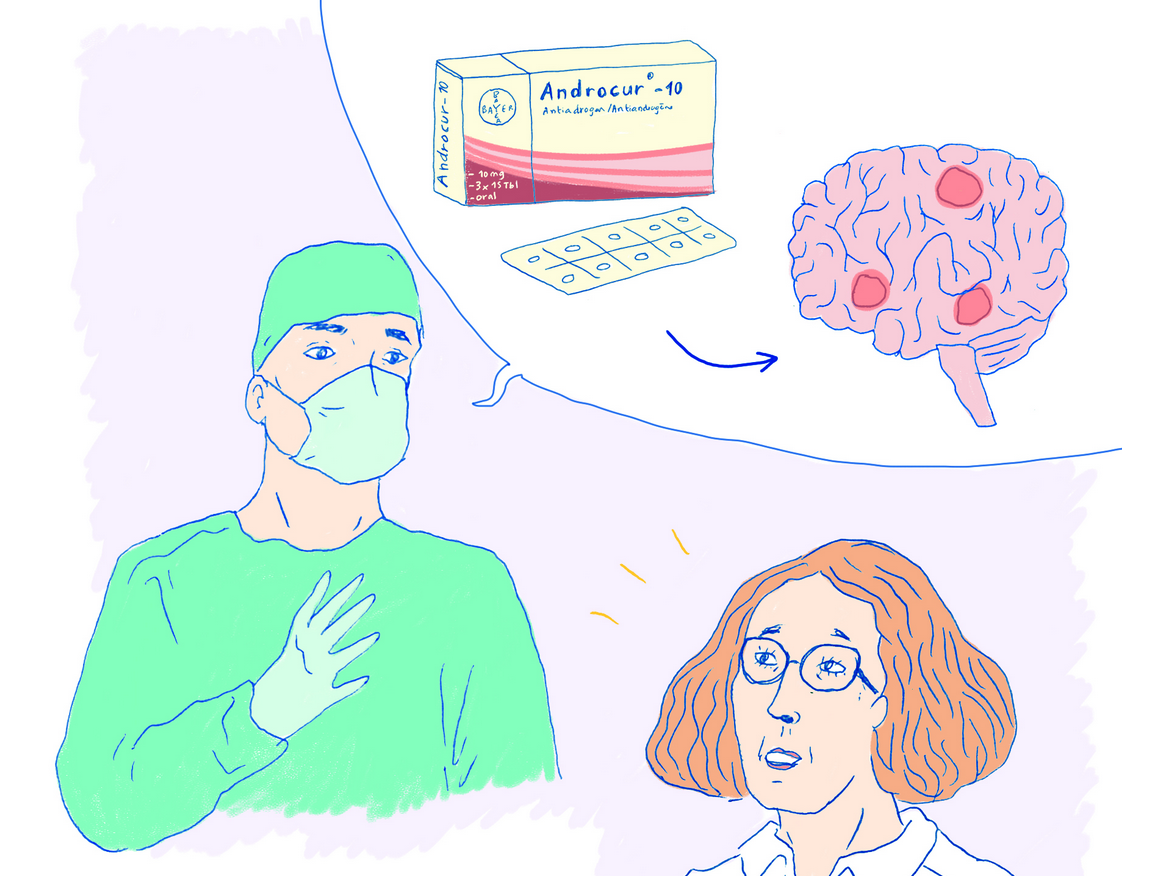The Androcur is well linked to an increased risk of meningioma
A study by the University of Bristol provides additional evidence that cyproterone acetate (CPA), marketed in France under the name Androcur, is well linked to an increased risk of benign brain tumor called meningioma.
 Tonport Kasa/Istock
Tonport Kasa/Istock-
- Posted on 08.02.2022 at 10:30 am
- Containing an active ingredient called cyproterone acetate, Androcur and its generics are prescribed to women with hirsutism, acne, endometriosis or as contraception. Men with advanced prostate cancer can also be prescribed.
- In France, the Medicines Agency has set up a toll -free number (0 805 04 01 10) accessible from Monday to Friday from 9 a.m. to 7 p.m. ”to answer questions from patients on Androcur.
Cyproterone acetate (CPA) is responsible for increasing the risk of meningioma, a generally benign brain tumor but which can strongly impact quality of life by causing a handicap linked to a brain compression in particular.
This is the conclusion of a new study published in Scientific Reports Friday, February 4. Led by researchers from the University of Bristol, in England, it confirms the results of other works, including a study of health insurance dating from 2018 , and suspected the androcur to multiply up to 20 (after 5 years of treatment), and even more, the probability of meningiomas in women treated for a long time and in high doses.
Meningiomas when the drug is used in high doses
Marketed since the 1980s by Bayer laboratories, the Androcur is a progestogy prescribed for years for women with hirsutism, that is to say an extreme development of hair, but also against acne, endometriosis or as contraception. Belonging to the class of steroidal antiandrogens and containing an active ingredient called Cyproterone acetate, Androcur is also used in men to treat prostate cancer at an advanced level.
In these new works, and taking into account the widespread use of cyproterone acetate, the researchers carried out a meta-analysis from four studies relating to a total of 8,132,348 patients. The objective was to assess whether the high -dose use of this drug was associated with the incidence of meningiomas.
The sample included 165,988 patients identified as taking cyproterone acetate at variable doses. Using this data, the team analyzed the appearance of meningiomas in patients using high -dose cyproterone acetate compared to those using low doses. A significant association between the use of high doses and an increased risk of meningioma was well found, which was not the case with the low doses.
"The cause of meningiomas is controversial but there is solid evidence suggesting a plausible role of sex hormones in the appearance of meningiomas," emphasizes Keng Siang Lee, medical student and the main study of the study. We know that he has a predilection for women, especially after puberty. »»
A limitation of the conditions of use in France and in Europe
In light of these results, the researchers recall that the prescription of Androcur in high doses, in particular for out -of -AMM indications, must be considered with caution. They also suggest that "systematic screening and the monitoring of meningiomas by brain MRI " are offered to patients to whom cyproterone acetate is prescribed in high doses and for long periods.
This is the case in France. Since July 1 , 2019, any new patient starting treatment with Androcur or one of its generics has been systematically informed of the risk of tumor linked to its prolonged use . In early 2020, the European Medicines Agency (EMA) also issued a series of recommendations to limit its use . From now on, it must be used only in cases of severe hirsutism where other treatments have failed. Its use is maintained in the treatment of prostate cancer. In the event of a history of meningioma, the Androcur can no longer be used even at low dosage.
For the time being, researchers recognize that they do not know if "cyproterone acetate below a certain threshold can be completely safe in terms of meningioma risk" and therefore wish to continue clinical research on the link between the drug and the risk of intracranial meningioma.





